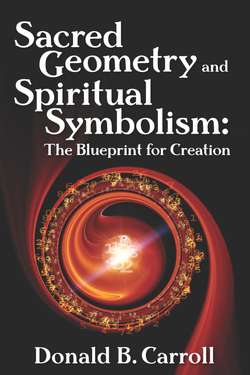Читать книгу Sacred Geometry and Spiritual Symbolism - Donald B. Carroll - Страница 8
На сайте Литреса книга снята с продажи.
ОглавлениеPreface
At some point in our lives we ask ourselves what is our purpose, what is our meaning, why do we exist? Why have we been endowed with self-consciousness and self-recognition and the ability to even ask these questions? We can surmise that these questions stem from our feelings of separation and the lack of wholeness we experience, which cause us to hope that there is a greater existence than just our finite time on earth, and not just those feelings. On occasion we also experience heights of joy and unity which cause us to know that there is a greater infinite existence. Unfortunately, we tend to regress from these knowing moments and live in doubts that lead us back to hoping there is something more, some greater unifying consciousness in the universe.
This knowing and hoping has been the impetus for the disciplines of science and religion to seek meaning and order for and in our existence. Religion generally espouses a belief of a greater, all-encompassing infinite consciousness that we have the ability to become one with through faith. On the other hand science seeks the mysteries of the creation of the universe and life through strictly observable and repeatable data that may or may not prove the existence of such a higher infinite consciousness. Religion knows through feeling experiences; science can have hopes through observed measurements.
Is there any evidence that the knowing of religion can be unified with the hoping observations of science? Can the doubting Thomas of science observe the substantiation of God? I say, “Yes!” Yes, through two geometric symbols consisting of the triangle and the arc and their aspects. It will be shown how, through the millennia, religions have intuited the importance of these shapes and incorporated their symbolism throughout their beliefs. This goes beyond shared collective consciousness archetypes limited to spiritual beliefs. It will also be shown how this geometry is being found by modern science in the essence of life and the cosmos. It is hard to believe that this shared geometry is merely coincidence and that the same two geometric forms found at the symbolic cores of religions all over the world and through the ages are now, because science has been able to advance far enough, being discovered in the fabric of the universe and life itself. I believe that once we explore these signposts, we will be able to know, with a synthesis of science and religion, that there is a higher consciousness and a Oneness for us all in the universe.
Note to Readers: Religion versus Spirituality: a Guide for Readers
In my discourse, the concepts of religion and spirituality are used often and to a certain extent can be considered interchangeable. Please, before the protest start over such a statement, allow me to clarify my meaning. Traditionally, being religious and being spiritual have been one and the same. In more recent times, more and more people are differentiating between the two terms. An example of this would be recent polls taken in the United States. In a February 11, 2003 Gallup poll, 50 percent of the people asked considered themselves to be religious, while 33 percent considered themselves not religious but spiritual. Perhaps more telling is a survey reported on by USA Today in an October 14, 2010 article reporting from a survey of that same year, where 72 percent of the age group of 18 to 29 said they are “really more spiritual than religious.” It is clear that these two terms are no longer being considered equivalent and that people are making a differentiation between them.
From what I have gathered, I believe people who call themselves religious vs. spiritual are usually involved in an organized religion, attend a church/temple of that religion, and feel a strong affiliation toward that religion over other religions (often feeling that theirs is the only true religion). People who call themselves spiritual vs. religious, may or may not attend a church/temple or be involved in organized religion, but if they are, they often feel there may be truth in more than one religious sect. Their religious beliefs are not usually what are referred to as “fundamental” or “orthodox” even within their own religious following.
One simple example, if one looks at the core of just three major religions: Christianity, Judaism, and Islam, will be found the spiritual concept that God is love and Godly love is something to be practiced and shared by all. This is not something to be constrained in only one religion's parameter. As the Persian Islamic poet Rumi put it: “O lovers! The religion of the love of God is not found in Islam alone. In the realm of love, there is neither belief, nor unbelief.”1
Spiritual masters brought forth spiritual ideas and truths that later became codified into religions by followers of these ideas. Though some may feel these ideas have been skewed by attempting to place them within finite parameters, the infinite divine reality from whence they originate remains in unity and oneness, and if one goes deep enough into any religion, the spirit and spirituality will still be found. In this shared Divine ground will also be found the roots of the symbols used by each religious philosophy and what will be seen is that these symbols are shared archetypes of a core unity.
